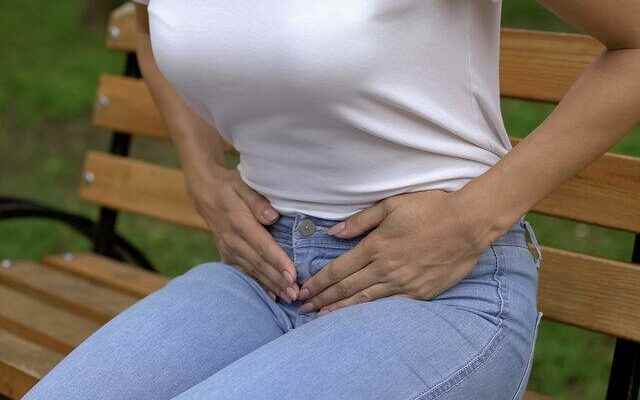Hernia is one of the most disturbing health problems in the society. Early treatment of hernia, which has many types, is very important. Inguinal hernia is the formation of swelling under the skin by the organs in the abdomen (such as small intestines, intestinal fats) coming out of the weak areas in the abdominal wall. Inguinal hernia, which is 7 times more common in men and increases in direct proportion to age, is usually detected by the formation of swelling in the inguinal region. General Surgery Specialist Op. Dr. Mustafa Koç gave information about inguinal hernia.
IT IS COMMONLY DETECTED BY PAIN AND Swelling in the groin
Koç stated that the incidence of inguinal hernia is high in those with chronic cough with COPD or asthma and said, “It usually manifests itself in the form of swelling, pain, burning or tearing sensation in the groin. Some hernias can be detected incidentally without swelling and pain, but mostly the swelling becomes more pronounced in situations that increase intra-abdominal pressure, such as coughing, straining or heavy lifting. Swelling usually becomes evident while standing, and is relieved or disappears when lying down.
IT IS MORE FREQUENTLY SEEN IN PEOPLE WITH LONG-TERM CONSULTANCY PROBLEM

Kiss. Dr. Koç stated that inguinal hernia is seen 7 times more frequently in men than in women, and said, “The incidence increases with age. Inguinal hernia is more common in those who work hard, have long-term constipation, have COPD or asthma, have a chronic cough, and inguinal hernia is more common. Most of the time, only palpation is sufficient to diagnose inguinal hernia. Usually, no other assay or imaging method is required. “Ultrasound is the imaging method of choice to detect a small hernia that does not show any obvious examination findings or to distinguish the symptoms of other diseases that may occur in the groin in patients who apply only with the complaint of pain without swelling in the groin.”
HERNIA CAN CAUSE ROOT OF THE BOTTOM

General Surgery Specialist Op. Dr. Mustafa Koç stated that inguinal hernia should be taken seriously and should be applied to the hospital in case of complaints, “The treatment of inguinal hernia is surgery. Leaving the inguinal hernia without treatment for a long time causes the area to be repaired to enlarge as time passes, and the swelling that will occur in the groin affects daily life. Intra-abdominal fat tissues in swelling may be small intestine, intestine or large intestine. This swelling and the structures in it can often turn into the abdomen spontaneously, or sometimes they can be stuck in the narrowest part of the tunnel formed by the hernia (incarceration). Compression and strangulation of the blood vessels of these compressed structures can also be seen. In this case, symptoms such as nausea-vomiting, inability to pass gas and stool, fever, bruising in the groin may be seen, as the pain becomes very severe. This is a life-threatening condition and requires urgent surgery.”
AFTER SURGERY, you should not lift heavy weights for a while.

Koç, stating that inguinal hernia surgery is the repair of the abdominal wall structure that has deteriorated in the inguinal region, said, “Currently, the most commonly used surgical method; It is an open, patched, tension-free (Lichtenstein) hernia surgery. Closed (laparoscopic) hernia surgery is the surgical technique that is more preferred and the rate of application is increasing in recent years. In both techniques, a knitted artificial prolene patch is placed between the abdominal wall layers. In the open technique, a patch is placed between the relatively outer layers of the abdominal wall by approaching the incision made over the hernia area in the inguinal region. In the closed technique, a patch is placed between the inner layers by approaching the wall from the inside with surgical instruments inserted into the abdomen. There is not much difference between Open-Laproscopic techniques when compared in terms of effectiveness. Both methods have their own advantages. Open hernia surgery can be performed with anesthesia from the waist down (spinal anesthesia). The operation time is shorter and the transaction cost is lower. Closed (laparoscopic) surgery does not require a large skin incision. Wound healing is quicker, pain is milder, and the risk of infection is lower. Return to daily physical activities and work is much faster. In the open method, a skin incision of 6-7 centimeters is made, while in the closed method, 3 skin incisions of 5-10 millimeters are sufficient. Surgery in laparoscopy requires general anesthesia (whole sleep). The results of both hernia surgery techniques are the same in terms of the durability of the repair. It is recommended to stay away from the work environment and rest for a week after the surgery. There is no obstacle to doing normal daily physical activities. It would be appropriate to stay away from work that requires stretching the groin for up to two weeks. Lifting more than 8-10 kilos for a month, heavy physical exercises, tennis, football, etc. heavy sports are inconvenient. Short distance walks are possible. At least in the first months, diseases with cough should be avoided and care should be taken not to be constipated.
